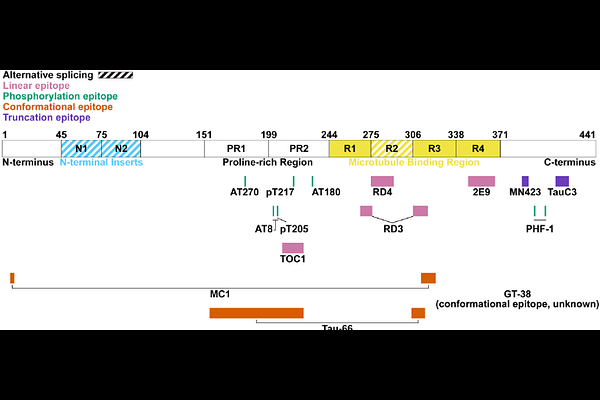The Neurofibrillary Tangle Maturity Scale: A Novel Framework for Tangle Pathology Evaluation in Alzheimer's Disease

The Neurofibrillary Tangle Maturity Scale: A Novel Framework for Tangle Pathology Evaluation in Alzheimer's Disease
Moloney, C. M.; Rutledge, M. H.; Labuzan, S. A.; Peng, Z.; Tranovich, J. F.; Wood, A. C.; Rothberg, D. M.; Duara, R.; Lachner, C.; Graff-Radford, N. R.; Dickson, D. W.; Kanaan, N. M.; Carter, R. E.; Murray, M. E.
AbstractNeurofibrillary tangles are dynamic neuropathologic hallmarks of Alzheimer\'s disease with a hypothesized lifespan morphologically-defined by three maturity levels: pretangles, mature tangles, and ghost tangles. To better understand the progression of tangle pathophysiology, we characterized tangle maturity level predilection of 15 tau antibodies recognizing a broad range of linear, phosphorylation, conformational, and truncation epitopes in the hippocampus of 24 postmortem brains. We developed the tangle maturity scoring system to semi-quantitatively evaluate each tangle maturity level. Based on proportions of tangle maturity levels, we classified antibodies as \"early\" (mostly pretangles and mature tangles), \"middling\" (mature tangles with pretangles and ghost tangles), and \"advanced\" (mostly ghost tangles and mature tangles) tangle maturity markers. To summarize tangle maturity predilection, we developed the tangle maturity scale to integrate individual tangle maturity scores. Correlations showed stronger relationships between tangle maturity scale and subsector thickness for more advanced tangle maturity markers in CA1 and subiculum, whereas Braak tangle stage remained consistently correlated throughout markers of the tangle lifespan. To aid in scoring hippocampi, we used machine learning to recognize tangle maturity levels, which performed comparably to a domain expert and showed similar relationships by Spearman correlation. Pattern recognition software was used to assess tangle and neuritic tau burden separately, which generally correlated with Braak stage and neuronal counts. However, tangle-derived tau burden more consistently correlated with hippocampal subsector thickness. In conclusion, we developed manual and automated scoring systems to evaluate tangle maturity levels, demonstrating early 4R, phosphorylated, and oligomeric tau accumulation preceding more advanced 3R and truncated tau. Our study provides supportive evidence of disease-relevant ordering of tau posttranslational modifications in the brain, which may have implications for theragnostic development. These findings underscore the promise of computerized quantitative analyses (i.e., pathomics) for high-throughput feature extraction from whole-slide images to enhance our understanding of microscopically observed morphologic changes.